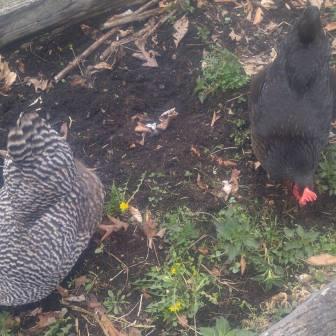Eclectic Homesteading Food Preparation: The Beginning Stages
Author: Fern Al'Thorn, July 2017
There are lots of things that go into making sure you have enough food to last you through the winter, or if the zombie apocalypse happens and you have to figure out for yourself how to survive. I will be breaking this into ongoing segments but first we will talk basics.
Homesteading and off-grid living is how I choose to live. I enjoy very much learning new skills and being able to take care of myself and my family with out having to rely on the grid.
Part of the trying to get into the off-grid lifestyle is to make changes in your routine of how you operate. For instance, I have a washing machine but not a dryer; I use the line outside to hang my clothes on, and less electricity as well. I also heat with wood in the winter, which cuts down on a lot of electric use. We have been installing small lighting fixtures that are solar and will move more toward that as we get settled in. There is still a lot to do and I hope before the end of the season this year I will have a greenhouse on site.
So the first thing that you do is to plant a garden. The best way to prepare your long term food for storage is to have good food to start with. If you are growing your food you know what is in or on it, like fertilizers and other such things. Most of our fertilizer comes from the livestock and compost pile from kitchen and yard scraps.
We raise chickens for meat as well as eggs, and we have a goodly sized garden. There will be a lot of canning happening later on in the season, but for now we have everything in and going. It is a long process and takes a good deal of patience and willingness to stand next to a hot stove for hours at a time when it is very hot outside, but to have fresh canned vegetables and fruits when there is snow on the ground makes it all worth it in the end.
Once things start coming into ripeness we will start the canning, freezing and storing food. There are many websites out there that can give amount guidelines for prepping food for long storage per person, but to give an idea of how much a person eats a year, these are the amounts recommended by the FDA and this link to the Purdue Extension is a great place to start learning.
- Meat - 150 to 200 pounds per year
- Flour - 200 to 300 pounds
- Sugar or honey - 60 pounds
- Fats or Oils - 60 pounds
- Salt - 5 pounds
- Powdered Milk - 75 pounds
- Vegetables and Fruits - 600 to 700 pounds
- Water - 375 gallons
Of course those numbers are based on you making all the things from scratch. Breads, pastas, jams, sauces, etc. I will only be doing some of those. I have found that it is best on the wallet to figure out what you eat the most of and make it. I use a lot of pasta sauce, so I plant enough tomato plants to get me the tomatoes I need to make up my sauce. I still have one jar left from last season.
I do some bit of freezing but it doesn't last as long as the canning. Meats and other things that are frozen have about a year of shelf life until it starts to have the freezer burn. The canned meats and things can last up to seven years on the shelf.
This is only the very tip of the iceberg when it comes to home canning your food. If it peaks your interest start researching. Or better yet ask your mothers or grandmothers, I am sure they can show you how.

